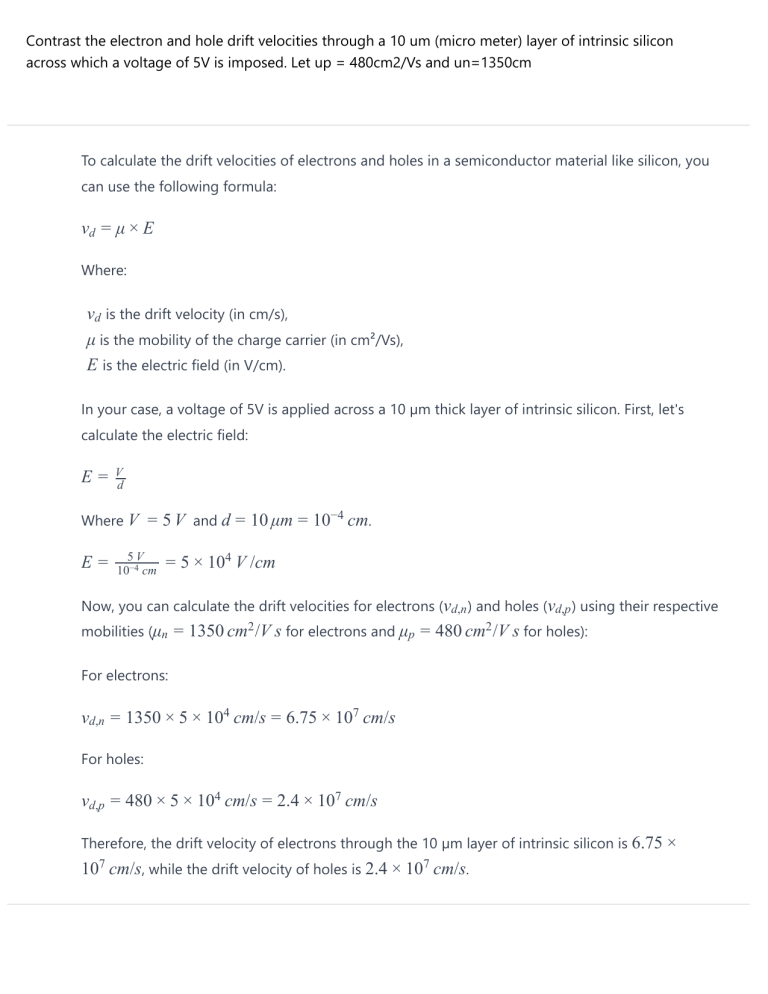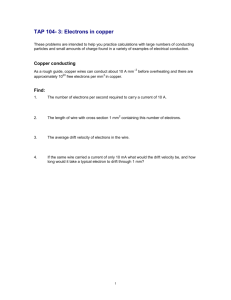
Contrast the electron and hole drift velocities through a 10 um (micro meter) layer of intrinsic silicon across which a voltage of 5V is imposed. Let up = 480cm2/Vs and un=1350cm To calculate the drift velocities of electrons and holes in a semiconductor material like silicon, you can use the following formula: vd = μ × E Where: vd is the drift velocity (in cm/s), μ is the mobility of the charge carrier (in cm²/Vs), E is the electric field (in V/cm). In your case, a voltage of 5V is applied across a 10 µm thick layer of intrinsic silicon. First, let's calculate the electric field: E= V d Where V E= = 5 V and d = 10 μm = 10−4 cm. 5V 10−4 cm = 5 × 104 V /cm Now, you can calculate the drift velocities for electrons (vd,n ) and holes (vd,p ) using their respective mobilities (μn = 1350 cm2 /V s for electrons and μp = 480 cm2 /V s for holes): For electrons: vd,n = 1350 × 5 × 104 cm/s = 6.75 × 107 cm/s For holes: vd,p = 480 × 5 × 104 cm/s = 2.4 × 107 cm/s Therefore, the drift velocity of electrons through the 10 µm layer of intrinsic silicon is 6.75 × 107 cm/s, while the drift velocity of holes is 2.4 × 107 cm/s.




